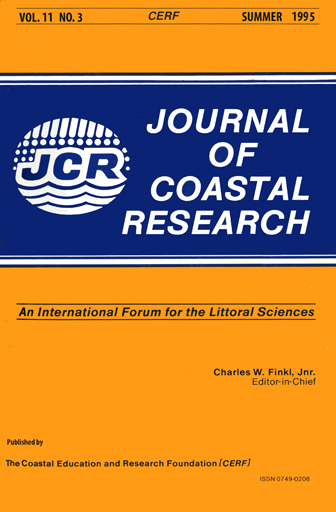Monsoon-Induced Temporal Changes in Beach Morphology and Associated Sediment Dynamics, Central East Coast of India
Keywords:
Monsoon, beach, size measures, sediment budget, wavesAbstract
The east coast of India experiences two annual rough weather spells associated with the NE and the SW monsoons. The wave climate, littoral current patterns, longshore sediment transport, beach profile changes, sediment budget and sedimentological parameters of the beach sediments were determined for monsoon events. The waves were moderate-high (H∞ > 2 m T∞ > 8 sec dir 150-240o) and moderate (> 2.0 m T∞ > 8 sec for 30% time) during the SW and the NE monsoons respectively. However, due to occurrence of cyclones/storms during the NE monsoon (p = 1 in November), there are sporadic enhancements in the wind and wave climate (wind speed > 60 km h-1; H∞ 2-4.5 m T∞ > 10 sec). The littoral currents were moderate to strong (30-70 cm sec-1) during the SW monsoon, variable during the NE monsoon (20- 50), and mild (0-40 cm) during non-monsoon period. The direction of these currents also reverses during and after the NE monsoon (from the SW in the SW monsoon to mostly from the NE in the remaining period). The beach profiles, which until April accrete, are much reduced in length, have no berm, higher beach slope, and no bars and troughs, in the SW monsoon. About 58 m3 m-1 were eroded from the beach during this monsoon. Despite the prevalent moderate-high wave regime, cyclonic storms and moderate-strong littoral currents, the beach profiles of the NE monsoon have accretion over the profiles of the SW monsoon (magnitude 25-30 m3 m-1). This accretion continues and about 91 m3 m-1 sediments were observed to be accreted on the beach until February. The factors which contribute to the accretion in high energy regime associated with the NE monsoon are delineated based upon the following: variations in the longshore sediment transport, wave energy flux, magnitude and direction of littoral current, sedimentological parameters of the beach and location of the area in the vicinity of high fluvial discharge.


